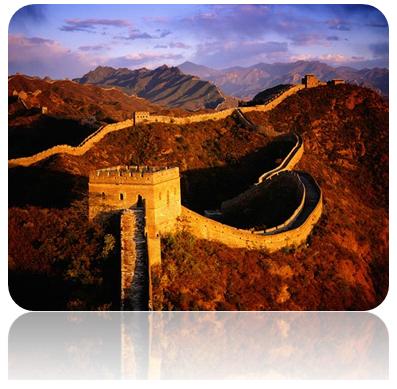The endless list of the country’s tourist attractions includes 99 famous national historical and cultural cities 750 national cultural sites under key protection and 119 major scenic resorts and sites of historical and cultural interest.
The land of China is pockmarked by historical sites and cultural relics. Beijing Xi’an Nanjing Luoyang Kaifeng Hangzhou and Anyang are seven ancient capitals. Few countries boast such majestic and intriguing landscape as China thanks to the infinite generosity and exhaustless bounty on the part of Mother Nature. Along the Lijiang River of Guilin the mountains are statuesque and there is something dreamlike about them. The five holy mountains are awesome sights and breathtaking is hardly an adequate word for the sights of the Yangtze River Three Gorges.
Some things not to miss while you're there include this selection
The Temple of Heaven
The Temple of Heaven was built in 1420 during the reign of Emperor Yongle of the Ming Dynasty, and is located in the southern part of the city. It was the place where emperors of the Ming and Qing would pray to heaven for good harvests. It was one of the most strictly protected and preserved cultural heritages of China. It is the largest temple complex in China with 12 million people visiting the temple every year.
The Summer Palace
The Summer Palace was a grand imperial palace and a royal garden of the Qing Dynasty. Construction began in 1750, and today remains an outstanding example of imperial gardens in classical Chinese style. The Summer Palace contains tens of thousands of precious cultural relics. This imperial garden features 3,000 rooms and covers an expanse of 17.3 acres, with more than 100 picturesque sites of interest.
Temple of the Jade Buddha
The Yufo (Jade Buddha) Temple was built in 1882, but it still remains in perfect condition as a sanctuary of Zen Buddhism. The temple derived its name from a jade statue of Sakyamuni from Myanmar. The Buddha is in graceful posture and has a serene look on his face.
Longhua Temple
Longhua Temple was built in the year 242. It is the oldest and largest temple in Shanghai. It maintains the original features of the Song Dynasty's Jialan Zan Sect seven-hall design. In the temple are kept Buddhist scripture, gold seals and Buddhist statues of the Tang, Five, Ming and Qing Dynasties. On every New Year's Eve the ceremony of Striking the Longhua Evening Bell is conducted here and is well known within China and abroad. The temple is also famous for its pagoda and its peach blossoms.
For more information go to www.cnto.org

China

